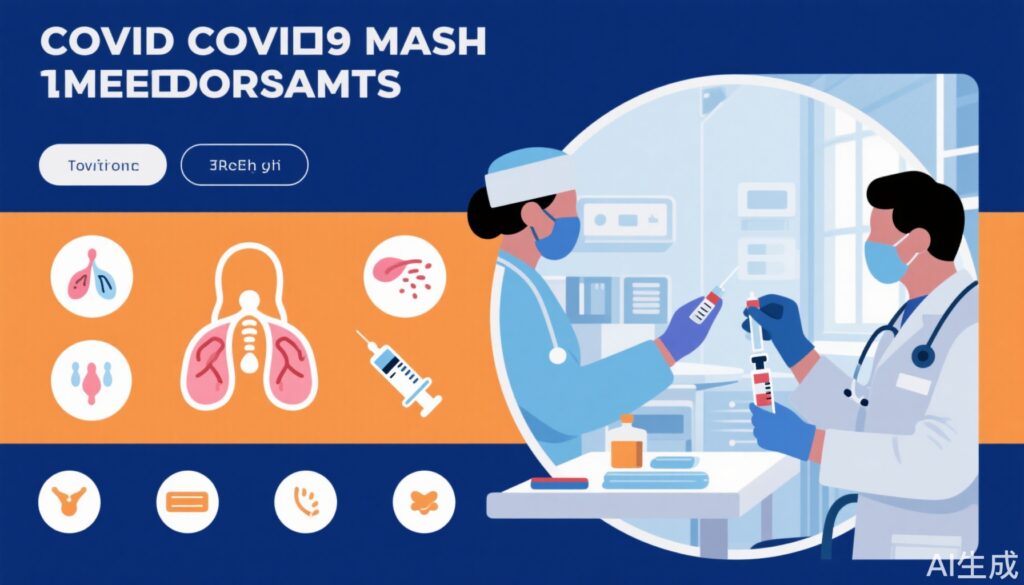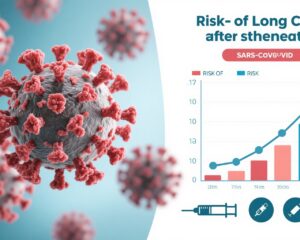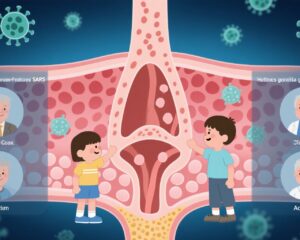Highlights
- Approximately 36% of Irish healthcare workers (HCWs) reported experiencing respiratory symptoms in 2024-2025, with 63% testing for COVID-19 during symptomatic episodes.
- Vaccination rates among HCWs remain suboptimal, with only 37% receiving influenza vaccines and 22% completing primary and booster doses for COVID-19.
- A prior diagnosis of Long COVID was associated with increased respiratory symptom burden, emphasizing the lasting impact of SARS-CoV-2 infection on HCW health.
- Self-testing correlates with more recent infections and prompt detection; however, risk factors for positive COVID-19 tests in symptomatic HCWs were not identified.
Background
Healthcare workers have consistently been at elevated risk for respiratory infections, particularly during the COVID-19 pandemic. While the acute phase of the pandemic highlighted challenges in infection control, vaccination uptake, and occupational health, the post-pandemic period requires ongoing surveillance to mitigate nosocomial spread and safeguard HCWs and vulnerable patients. Recent data from Ireland provide contemporary insights into respiratory disease burden, testing practices, and vaccine uptake in this critical workforce.
Key Content
Study Design and Population
The Trinity College Dublin-led PRECISE study collected monthly online survey data from 893 self-selected HCWs across all disciplines at two major Irish hospitals, from September 2024 to February 2025. Participants were followed for at least four months, allowing analysis of symptomatic respiratory illness, COVID-19 testing behavior, vaccination status, and related factors.
Symptomatic Respiratory Illness and COVID-19 Testing
– Over one-third (36%) of participants reported symptoms of respiratory illness during the study period, primarily characterized by sore throat, cough, nasal discharge, and headache.
– Of these symptomatic HCWs, 63% undertook COVID-19 testing, aligning with national guidelines that recommend testing with symptoms or exposure.
– Most COVID-19 tests (84%) were symptom-driven, with smaller proportions related to close contact tracing or high-risk exposures.
– Self-administered testing was more prevalent among those with a shorter interval since their last confirmed COVID-19 infection.
– Among those tested, 17% returned positive results, equating to 4% of the total HCW cohort.
– Importantly, no demographic or clinical factors predicted positive test results, suggesting widespread risk across HCW subgroups.
Vaccination Uptake and Associated Factors
– Vaccine coverage was notably low: 37% for seasonal influenza and 22% for COVID-19 vaccines (inclusive of primary series and two boosters).
– Older HCWs and those with recent SARS-CoV-2 infection were more likely to be vaccinated.
– Male HCWs exhibited higher odds of COVID-19 vaccination compared to females.
– Persistent concerns about vaccine uptake are underscored by established evidence linking COVID-19 vaccination with reduced risk and severity of Long COVID.
Long COVID and Symptom Burden
– Approximately 76% of participants reported prior COVID-19 infection, with a median duration of one year since last infection before study enrollment.
– A prior diagnosis of Long COVID (4% prevalence) was significantly associated with increased symptom burden during the study, reinforcing the chronic impact of SARS-CoV-2.
– This chronic symptomatology poses challenges for HCW health, performance, and workforce capacity.
Implications for Infection Prevention and Control (IPC)
– The persistence of symptomatic respiratory infections in HCWs highlights the ongoing risk of nosocomial outbreaks.
– Low vaccine uptake represents a critical gap in mitigating both acute infections and Long COVID risks.
– The study supports the need for enhanced education, accessibility, and mandates where appropriate to improve vaccination rates.
– Self-testing adoption supports timely detection but must be supplemented with robust IPC practices including masking, ventilation, and outbreak management.
Expert Commentary
This study provides valuable real-world data regarding respiratory illness patterns and mitigation strategies in HCWs during the post-pandemic phase. The high proportion of symptomatic HCWs testing for COVID-19 is encouraging and reflects adherence to public health guidance. Nonetheless, concerningly low vaccination rates for both influenza and SARS-CoV-2 vaccines expose a vulnerability that could exacerbate transmission risks and workforce shortages.
The observed association between Long COVID and symptom recurrence suggests that post-acute sequelae must be a priority in occupational health frameworks. Mechanistically, vaccination may reduce viral replication and immune dysregulation, thereby preventing chronic sequelae, emphasizing its critical role beyond acute infection prevention.
From a stewardship perspective, integrating vaccination campaigns with ongoing respiratory infection surveillance is vital. Given the multifactorial nature of HCW infection risks, including community and workplace exposure, IPC programs must maintain vigilance and adaptability.
Limitations include self-selection bias, reliance on self-reported data, and limited generalizability outside the Irish healthcare setting. Nonetheless, these findings align with prior observations internationally, underscoring universal challenges.
Conclusion
Respiratory infections remain prevalent among healthcare workers, with approximately 6 in 10 symptomatic individuals undergoing COVID-19 testing, consistent with best practice guidelines. However, suboptimal influenza and COVID-19 vaccination rates persist, exacerbating risks for individual HCWs and patients alike. The link between Long COVID and respiratory symptom burden further complicates the post-pandemic occupational health landscape.
Effective mitigation requires multi-pronged approaches including enhanced vaccination uptake, routine symptomatic testing, and comprehensive IPC measures. Ongoing research should focus on barriers to vaccination, strategies to manage Long COVID in HCWs, and evaluation of IPC program effectiveness in the evolving epidemiological context.
References
- Townsend L, Domegan L, Wang W, Quirke S; PRECISE Steering Group; Bergin C, Fleming C. Factors influencing healthcare worker symptomatic respiratory infection and vaccine uptake during the post-COVID-19 pandemic period. Antimicrob Steward Healthc Epidemiol. 2025 Aug 13;5(1):e183. doi: 10.1017/ash.2025.10094. PMID: 40808898; PMCID: PMC12345059.



